The first and most important stage in the cultivation of the majority of garden plants is the cultivation of healthy seedlings. Already during this period, initial prerequisites are laid for good and abundant yields. How to properly raise cucumbers, find out from our article.
Selecting sowing material
The cucumber seeds are good in that they retain the germination for a fairly long period, which is up to 10 years. But the quality of the sowing material will be high only if it is stored under optimal conditions. Such conditions are considered to be temperatures up to + 15 ° C and air humidity not exceeding 50-60%. These indicators need to adhere to if you grow cucumbers from your own former yields. If you prefer not to store seeds, but buying ready, give preference to the product of famous manufacturers.
Those who had not been engaged in the cultivation of cucumbers, can be advised to acquire early cultural varieties with good shadowiness and capable of self-pollution. When choosing a sowing material, it is worth considering some recommendations:
- High-quality seeds can be estimated visually. They should be clean, large enough and possess a beautiful shiny surface.
- Seeds that are stored 2-4 years old have the greatest germination.
- Check out which grains will grow seedlings, it is very easy. It is necessary to take 0.5 glasses barely warm water and dissolve in it approximately 0.5 cl. Salt. Then omit the seeds into this liquid and observe which of them will fall on the surface. Raising grains can be safely filtered and throwing out, because they are empty inside.
- When choosing a variety, it is advisable to take into account the estimated dates of landing. If you plan to plant cucumbers in April, give preference to early grades. Cucumbers, sowed in early May, can be any time ripening. Well, those cultures that plan to plant in the late spring should have good resistance to disease and pests.
- Purchased seeds sometimes have an unusual color - this means that the material is processed properly and covered with composition with growth stimulants. There are no additional training for such seeds.
It is possible to consider in detail the healthy seedlings of cucumbers on videos that are quite a lot on the Internet. And those who wish to breed a culture from seeds collected on their own bed, I want to give a couple of tips:
- The varietal cucumbers do not always grow exactly the same as they were last year. Sometimes culture has the varietal signs that were present in it several seasons ago.
- F1 hybrids generally rarely give subsequent crops with the same varietal signs that they were initially.
Seed preparation for sowing
If you have acquired untreated seeds or collected them yourself, the sowing material needs mandatory presense. This process consists of several stages:
- Disinfection of seeds - a procedure that protects cucumbers from diseases. Disinfection is carried out very simply and is required for it quite a bit: water and permanganate potassium. 1 g of substances need to dissolve in 100 ml of water temperature, then immersed in the liquid of cucumbers grain and leave them for 30 minutes. After that, the mortar of manganese needs to be merged, and rinse the seeds thoroughly under the crane.
- The soaking of seeds is another important stage of preparation, allowing sponsors to get through the solid shell of grains. To soak seeds, they must be pre-wrapped in a four-folded gauze or any thin natural fabric. Then you should fill with a shallow tank with water and put a gauze envelope into the liquid with seeds. Water for soaking should be room temperature, and the seeds should only be barely covered with liquid, as the overaffect of water will not give the air to enter spons.
- An important procedure in the preparation of cucumber seeds is their hardening, which will make plants more enduring before low temperatures. Hardening is carried out like this: gauze, in which grains are wrapped, placed in the refrigerator for 2 days. The temperature in the refrigerator should be at the level of 0 ° C, and the fabric with seeds should be maintained in a wet state. Also note that the seeds at the hardening stage should not be sprouted, otherwise the sprouts may die. After this stage, it is possible to plant grains to the ground immediately.
- Instead of soaking seeds, it is sometimes conducted by the bubbling procedure. For this, the grains are put in a tissue bag and lowered it into a deep tank with water. There is also placed aquarium processor and include it. Air bubbles must evenly penetrate the bag with seeds. The procedure for cucumber seeds is carried out within 15-20 hours. Then the grains are dried and immediately sow into the ground.
Seeding seeds
Terms of landing of culture
Thinking over when to plant cucumbers to seedlings should be calculated in such a way that young shoots have not turned before being transferred to open ground. For example, in the middle lane of Russia, seed seeds into unheated greenhouses in the first half of April, from 10 to 15, and if the cucumbers are sled into the open soil under the film, then do it better from April 20 to 25.
When there are 3 real leaves in the seedlings, it can be transferred to a heated greenhouse in the first decade of May. In film greenhouses heated by the Sun, sprouts are transplanted from 15 to 20 May.
Suitable conditions for seedlings should include factors such as sufficient illumination, an acceptable temperature and high humidity. If you observe these requirements for any reason it is impossible, there is a risk of stretching sprouts. In a similar case, the stalks of the plants will be thinner, the leaves will be smaller, and the seedling itself is weaker. To avoid this, you can transfer the sprouts into the ground slightly earlier when they appear not 3-4, and 2 of the present leaflet.
If seedlings are sown into the unheated greenhouse, the soil with crops should be further covered with a film. In such conditions, it is possible to grow cucumbers from May 15, and after June 10 to transfer them to a constant bed.
Preparation of soil to seeds
Before growing seedlings of cucumbers, it is important to create them the right conditions that are also in the preparation of the soil. In principle, in specialized stores you can find ready-made compounds suitable for certain plants. But if you wish to prepare the ground yourself, here are some examples:
- Take 1 land bucket and mix it with 3 liters. Make 1 tbsp. Superphosphate and 1 cup of wood ash. To make clay soil less severe, it can be diluted with 2 liters of fine sand. Similar soil can be distributed across cups or containers and sow seeds.
- Mix 3 buckets of soil from the garden with 1 bucket sawdust. Make 1 bucket of manure in the mixture and mix.
- Another composition suitable for cucumbers consists of such components: 2 buckets of the Earth, 2 buckets of peat, 1 bucket of manure, 2 glasses of wood ash and 2 tbsp. Superphosphate.
- If the soil is peat, excessive acidity needs to be neutralized. To do this, mix the peat bucket with the urea matchbox, 1.5 boxes of potassium sulfate and 2 superspat boxes.
When preparing the soil, its density should be taken into account. For example, in the boxes the earth must be sufficiently crumbly, but in some small cups - more dense. It is possible to break the soil with small sawdust.
Features of lighting when growing seedlings
When growing cucumber seedlings, it is necessary to pay special attention to lighting. The lack of light leads to the fact that the plants are pulled up, become thinner and weaker. In the event that the tanks with sprouts are located on the window and do not receive any additional light, except for sunlight, it is better to put plants as close as possible to the glass.
Still, it is still that the place of growing cucumber seedlings was equipped with additional light sources. Very useful in this case, special lamps "Flora" may be very useful, but for the absence of those, you can use ordinary daylight lamps. Such luminaires should be placed by about 40-50 cm above seedlings. Cucumber seedlings should be under the light for 15 hours every day.
Landing seed into the soil
Having distributed the land in cups or containers, it must be slightly moistened and explode, after which it is possible to blow the grains into the soil. The depth for cucumber seeds should be approximately 1.5-2 cm. After planting a container with a soil, you need to cover with a transparent film or glass, and then rearranged into a warm and illuminated place. The temperature suitable for germinating cucumbers is 20-25 ° C and is constantly supported at this level.
So that the land did not heat, the film needs from time to time to remove and give spons to air access. When shoots are proceeding, you should constantly monitor the maintenance of the right level.
Care for cucumber seedlings
Watering plants
A good level of humidity is very important for seedlings of cucumbers. The soil under the seedle should not be dry, but the convergence is also desirable to avoid. You can check the earth by pulling it into a lump. Mind the handful of soil and try to make it. Dry land is simply not gathered in a lump, and unnecessary wet with difficulty can be reckoned again.
As soon as the first shoots are separated over the surface of the soil, the seedlings will need to provide frequent watering. A few days later, when the sprouts are fixed, watering needs to be made moderate. By the way, the water used should be warm, not colder than 25 ° C. If we water seedlings with cold water, it will grow slower.
When 2 real leaves appear on the plants, watering can be made abundant. In the process of growing cucumber seedlings, the degree of moisture of the soil must be checked constantly.
Feeding cucumber seedlings fertilizers
Feeding seedlings is an integral part of the care. Before the cucumbers will be transferred to a permanent place of growth, they need to be easily supported at least 2-3 times. The first time fertilizer is introduced into the soil when it appears on the stems 1 in the present sheet. The second feeder is carried out after the appearance of 2 sheets, and after 14-15 days, the culture fertility for the third time.
For the first time, prepare such a mixture of fertilizers: mix 15 g of superphosphate, 1 cup of bird litter, 7 g of ammonia nitrate and 8 g of potassium sulfate. These substances need to dissolve in 10 liters of clean water and put in the soil during watering seedlings.
Subsequent feeding can be produced in the same composition, only the concentration of substances in water should be twice as much. With repeated feeding, you can additionally saturate the soil by trace elements to reduce the risk of developing some common diseases.
Hardening of plants
Before transferring seedlings to a permanent place of growth, it is desirable to harden. Such a procedure will make sprouts stronger and resistant to adverse weather factors. In cool weather, hardening is carried out by opening windows in a room in which the cucumbers grow. At first, such ventilation should be about 2 hours a day. Then this time can be renewed for 1 hour every day.
In warm weather, seedlings can be taken out to the street. It is recommended to do it when it remains for the landing of cucumbers around the week. Initially, the containers with sprouts are left in the fresh air for 1 hour. Then time gradually increase to 3 hours. With this hardening, it is desirable to slightly reduce the rate of irrigations.
Cucumber landing
When the last frosts end, cucumbers can be transferred to a constant bed. The transplantation should be carried out together with an earthen room in which there are plants roots. It is necessary to remove the sprouts from the containers as careful, trying not to damage gentle roots. And to remove the seedlings from the cups, without recking the lump of the earth, before the transplant you need to refrain from irrigating and give the soil to dry.
First, prepare the garden, digging the pits and moisturizing them. Then cut the cuts from the cups and squeeze the com from the roots. Immerse the sprouts into the prepared wells and fall asleep wet earth. Survery a little and suck with dry soil.
In the first days after the transplant, the cucumbers did not burn into the sun, they need to ensure the shadow, stretching over the seedl of the grid or sticking the sprouts with wood or cardboard boxes.

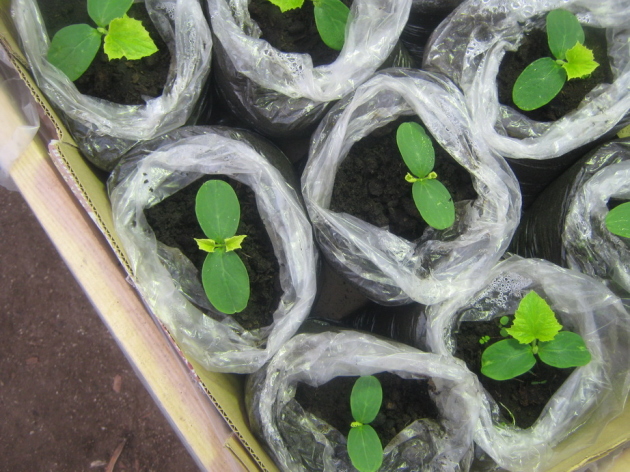

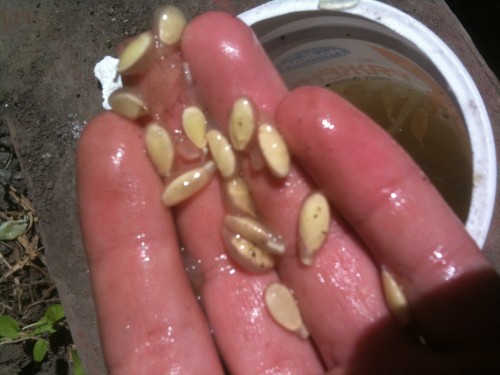
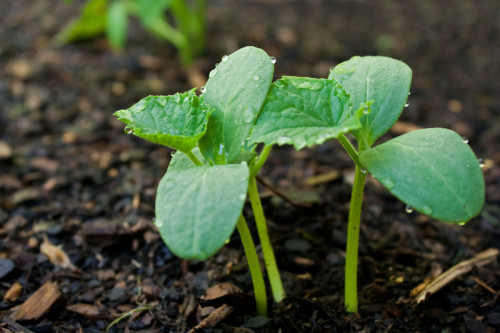
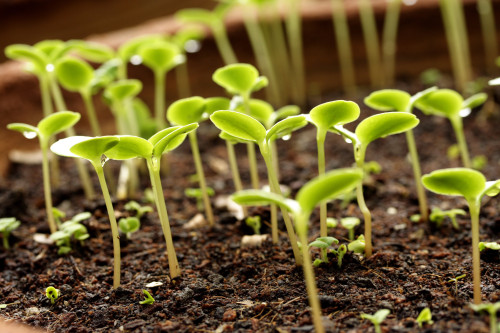
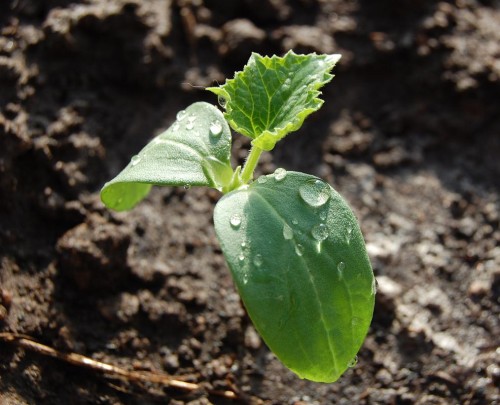
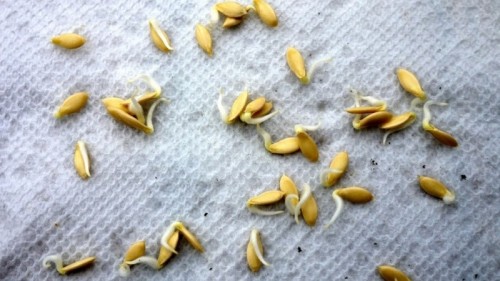
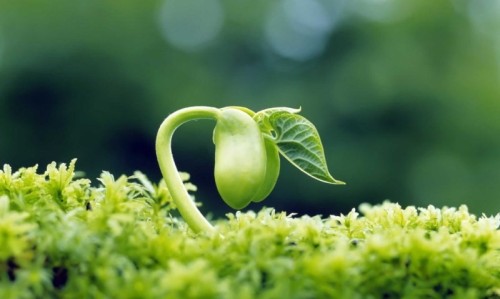
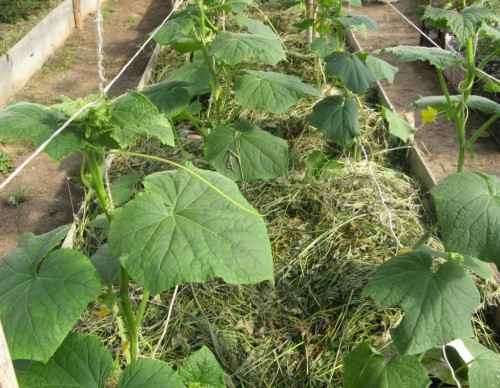
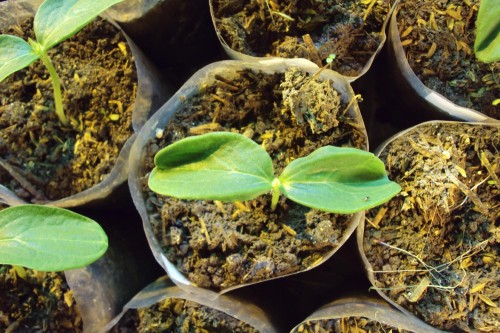
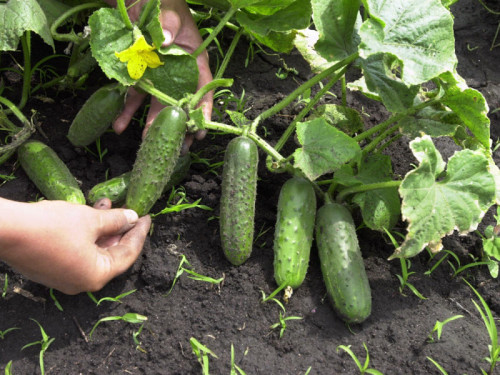












 Start a discussion ...
Start a discussion ...